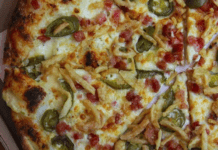Fine dining was one of the hardest-hit segments in the foodservice community during the pandemic. As the foodservice community re-opens its doors for business, indications are that fine dining is making a comeback, but with a somewhat different spin on the operational front.
Fine dining dropped the most for the first two years of the pandemic according to The NPD Group CREST restaurant industry tracking service. “While fine dining was up by more than 60 per cent in terms of visits for the 12-month period ending August 2022 versus August 2021, they had the worst previous two years – down 20 per cent from 2021 to 2022, and down 40 per cent from 2020 to 2021,” says Vince Sgabellone, foodservice industry analyst, NPD Group “Visits for the segment are still down by 20 per cent from 2019, compared to seven per cent for the industry as a whole.”
He adds the fine-dining segment makes up less than one per cent of all foodservice establishments. “However, it accounts for four per cent of the dollars spent.”
A large part of the initial decline was that independents did not have the corporate support, marketing programs, or help with the rent that other segments did, explains Sgabellone. “They were left to their own devices, so suffered more than anybody, as they didn’t really have off-premise infrastructures. Fine dining is all about the experience and the atmosphere and being pampered. That’s what people pay the elevated prices for. You can’t get the out of a takeaway box.”
Creative operators were able to find innovative ways to bring the restaurant experience home, setting up online markets and grab-and-go offerings, selling grocery items, creating elevated comfort food menu items for takeout, forging retail partnerships, or hosting virtual food-preparation and wine-pairing tutorials.
“Many found interesting ways to interreact with guests during the pandemic,” says Chris Elliott, chief economist and VP research, Restaurants Canada. “One lesson that operators learned from this is maybe they can be different in ways they couldn’t think of before. Some were so successful they are continuing to do them.”
When the pandemic hit, Steve Beckta, owner/operator of Beckta, and its sister restaurants Play food+wine and Gezellig in Ottawa added Curated by Beckta to the fold, offering curated cases of wines to meet consumers’ individual tastes during the first lockdown. He also set up virtual wine-tasting sessions and corporate team building events.
In addition, he developed three-course fine-dining meal kits and produced weekly videos on how to finish the food at home. “We sold about 20,000 of them,” says Beckta, who recorded his 200th YouTube video in September and plans to continue. “Through all the ups and downs, these have allowed us to smooth things out.”
The movement to support local businesses also kept some fine-dining establishments afloat, says Elliott. “That can’t be overlooked. We saw great support with consumers buying very high-end offerings that they couldn’t buy at the grocery stores to enhance the food quality they were preparing at home.”
Elliott reports that the first half of 2022 showed quite impressive movement for full-service restaurants overall. “There was a lot of pent-up demand with people wanting to get out and make up for last time. By Q2, traffic was just 0.7-per-cent below Q2 2019. A lot of that was from the supper day part, which has returned to pre-pandemic levels.”
Moving forward however, fine-dining establishments are facing the same skills shortages that are plaguing the foodservice industry overall. Elliott reports that there are currently 171,750 job vacancies across the country.
“Part of the challenge with fine dining is that it requires an incredible amount of prep work. That’s hard to manage if you don’t have the staff,” he says.
To relieve the burden, some operators are taking cost-cutting measures by streamlining menus and educing their hours of operation.
Fine-dining establishments in urban areas have been especially challenged as much of their revenues depended on business lunch and dinner meetings. “People working remotely has made it difficult for restaurants serving downtown customers,” says Elliott. “Our May 2022 study showed that 30 per cent of Canadians were working mostly or entirely remotely. In Ottawa that number jumps to 60 per cent.”
“People just aren’t coming back to work in Ottawa,” confirms Beckta. “Downtown is still pretty empty for lunches.”
Elliott sees the future of fine dining moving in two different directions. “First, we will see more demand for the high scale, high quality, caviar/champagne ultimate luxury experience. Others will try to make fine dining more accessible with a wine bar or smaller shareable menu items rather than a $100 steak. The middle is entirely gone. Operators must determine which works best for them and their clientele.”
Nick Di Donato, president & CEO, Liberty Entertainment Group, says business is coming back with a vengeance for its high-end luxury properties, especially Don Alfonso, which was awarded a Michelin Star in September 2022.
“After COVID, everyone thought that high-end fine dining would decline considerably. The opposite happened for us. Fine dining has exceeded any other markets in our portfolio. Per-capita spend is higher and for good reason. People have been locked up for two years, now they are making up for lost time. Since receiving the Michelin Star, we are already sold out until the end of December.”
One statistic that dining operators might want to examine is that breakfast and brunch has doubled for fine dining, says Sgabellone “It’s an affordable treat where people can get pampered at a slightly lower price point. It might be a way for fine dining to replace lunch occasions where there is less business travel and find an extra niche where they can differentiate.”
He believes the reduced business travel will also remain a challenge for the fine-dining sector in the months to come. “Price point is another issue, although it is too soon to say how that will impact operations. And we are still at a point where 20 per cent of the population is not comfortable going out to sit-down restaurants. On the upside, consumers are still spending money out there.”
BY DENISE DEVEAU

















